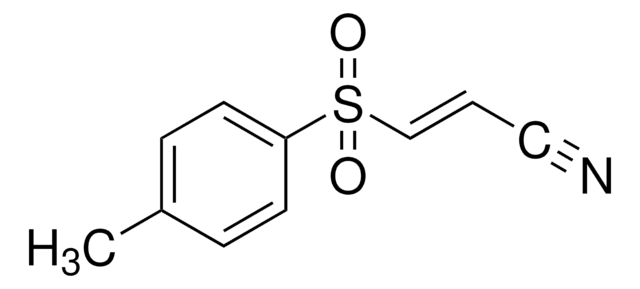L4894
Lactoferrin aus Frauenmilch
powder, BioReagent, suitable for cell culture
About This Item
Empfohlene Produkte
Produktlinie
BioReagent
Assay
≥85% (SDS-PAGE)
Form
powder
Mol-Gew.
82.4 kDa
Methode(n)
cell culture | mammalian: suitable
Farbe
white to light red
Löslichkeit
PBS, pH 7.4: 1 mg/mL, clear to slightly hazy (0.01 M phosphate buffer, 0.0027 M potassium chloride and 0.137 M sodium chloride, pH 7.4, at 25 °C)
UniProt-Hinterlegungsnummer
Versandbedingung
ambient
Lagertemp.
2-8°C
InChI
1S/C35H53N9O12/c1-16(2)27(43-33(53)23(14-26(47)48)41-25(46)15-38-29(49)18(5)39-31(51)21(36)13-24(37)45)34(54)40-19(6)30(50)42-22(12-20-10-8-7-9-11-20)32(52)44-28(17(3)4)35(55)56/h7-11,16-19,21-23,27-28H,12-15,36H2,1-6H3,(H2,37,45)(H,38,49)(H,39,51)(H,40,54)(H,41,46)(H,42,50)(H,43,53)(H,44,52)(H,47,48)(H,55,56)/t18-,19-,21-,22-,23-,27-,28-/m0/s1
InChIKey
QCBUWCQOKPLTDZ-PKRULZLPSA-N
Angaben zum Gen
human ... LTF(4057)
Suchen Sie nach ähnlichen Produkten? Aufrufen Leitfaden zum Produktvergleich
Verwandte Kategorien
Allgemeine Beschreibung
Anwendung
- to test its neuroprotective effect on neuroblastoma cells and mouse mesencephalic dopaminergic cell lines MN9D
- to test its antioxidative effect in Edible Bird′s Nest (EBN) induced toxicity in human neuroblastoma SH-SY5Y cells using oxygen radical absorbance capacity (ORAC) assay and 3-(4,5-dimethylthiazol-2-yl)-2,5-diphenyltetrazolium bromide (MTT) assay
- in the preparation of immobilized titanium substrate for testingMG-63 osteoblast activity
- as a low-density lipoprotein (LDL) receptor-related protein (LRP1) ligand in vascular smooth muscle cells (VSMC)
Biochem./physiol. Wirkung
Lagerklassenschlüssel
11 - Combustible Solids
WGK
WGK 3
Flammpunkt (°F)
Not applicable
Flammpunkt (°C)
Not applicable
Analysenzertifikate (COA)
Suchen Sie nach Analysenzertifikate (COA), indem Sie die Lot-/Chargennummer des Produkts eingeben. Lot- und Chargennummern sind auf dem Produktetikett hinter den Wörtern ‘Lot’ oder ‘Batch’ (Lot oder Charge) zu finden.
Besitzen Sie dieses Produkt bereits?
In der Dokumentenbibliothek finden Sie die Dokumentation zu den Produkten, die Sie kürzlich erworben haben.
Kunden haben sich ebenfalls angesehen
Unser Team von Wissenschaftlern verfügt über Erfahrung in allen Forschungsbereichen einschließlich Life Science, Materialwissenschaften, chemischer Synthese, Chromatographie, Analytik und vielen mehr..
Setzen Sie sich mit dem technischen Dienst in Verbindung.












